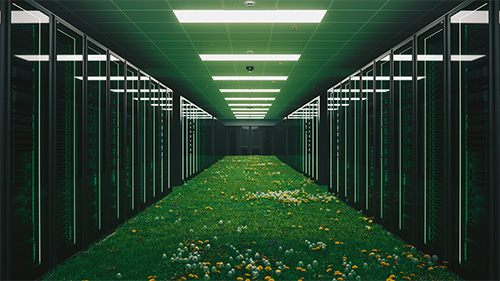The Green Computing movement has begun in earnest and not a moment too soon. As humanity faces the existential threat of climate crisis, technology needs to be part of the solution. Green computing is a big step in the right direction.
The ultimate goal of Green Computing is net-zero emissions. It’s a symbiotic relationship between technology and nature in which both SMBs and enterprises can offset carbon emissions, drastically reduce pollution, and reuse/recycle the materials that make up their products and services.
To get there, the tech industry will need to first take a long, hard look at the energy it uses and the waste it produces. Using that information, individual organizations can and must innovate, conducting an ongoing campaign to increase efficiency and reduce waste.
It’s a lofty goal, sure. But after all the self-inflicted damage we’ve done since the dawn of the Industrial Revolution, we simply have no choice.
The data-center conundrum
All digital technology requires electricity to operate. But data centers use more than their share.
Here’s a startling fact: Each year, the world’s data centers gobble up at least 200 terawatts of energy. That’s roughly 2% of all the electricity used on this planet annually.
What’s more, that figure is likely to increase as new, power-hungry systems are brought online and new data centers are opened. And the number of global data centers could grow from 700 in 2021 to as many as 1,200 by 2026, predicts Supermicro.
At that rate, data-center energy consumption could account for up to 8% of global energy usage by 2030. That’s why tech leaders including AMD and Supermicro are rewriting the book on green computing best practices.
A Supermicro white paper, Green Computing: Top 10 Best Practices For A Green Data Center, suggests specific actions you and your customers can take now to reduce the environmental impact of your data centers:
- Right-size systems to match workload requirements
- Share common scalable infrastructure
- Operate at higher ambient temperature
- Capture heat at the source via aisle containment and liquid cooling
- Optimize key components (i.e., CPU, GPU, SSD, etc.) for workload performance per watt
- Optimize hardware refresh cycle to maintain efficiency
- Optimize power delivery
- Utilize virtualization and power management
- Source renewable energy and green manufacturing
- Consider climate impact when making site selection
Green components
Rethinking data-center architectures is an excellent way to leverage green computing from a macro perspective. But to truly make a difference, the industry needs to consider green computing at the component level.
This is one area where AMD is leading the charge. Its mission: increase the energy efficiency of its CPUs and hardware accelerators. The rest of the industry should follow suit.
In 2021 AMD announced its goal to deliver a 30x increase in energy efficiency for both AMD EPYC CPUs and AMD Instinct accelerators for AI and HPC applications running on accelerated compute nodes—and to do so by 2025.
Taming AI energy usage
The golden age of AI has begun. New machine learning algorithms will give life to a population of hyper-intelligent robots that will forever alter the nature of humanity. If AI’s most beneficent promises come to fruition, it could help us live, eat, travel, learn and heal far better than ever before.
But the news isn’t all good. AI has a dark side, too. Part of that dark side is its potential impact on our climate crisis.
Researchers at the University of Massachusetts, Amherst, illustrated this point by performing a life-cycle assessment for training several large AI models. Their findings, published by Supermicro, concluded that training a single AI model can emit more than 626,000 pounds of carbon dioxide. That’s approximately 5 times the lifetime emissions of your average American car.
A comparison like that helps put AMD’s environmental sustainability goals in perspective. Affecting a 30x energy efficiency increase in the components that power AI could bring some much-needed light to AI’s dark side.
In fact, if the whole technology sector produces practical innovations similar to those from AMD and Supermicro, we might have a fighting chance in the battle against climate crisis.
Continued…
Part 2 of this 3-part series will take a closer look at the technology behind green computing—and the world-saving innovations we could see soon.



